In continuation of my Divemaster series, this is the third and final post. In Dec 2015, I spent a very memorable month completing my divemaster course in Komodo. This post documents my experiences and what goes into the course itself. If you want to see nice pictures and videos about the diving in Komodo itself, please read the previous post, or if you want to learn what the Divemaster is, please read the intro post!
Diving has always been one of my biggest passions. I’ve dived all around the world and it was time to take my diving to the next level by completing my divemaster course. I spent over a month in Komodo while living in Bali and it was one of my most memorable experiences.
Completing My Divemaster Course in Komodo
I completed my divemaster training at Scuba Junkie Komodo over the span of a month. It was some of the best diving I’ve ever done and one of the best experiences I had. The eat, sleep, repeat dive motto was on full display and I couldn’t get enough.
Not only was the divemaster itself amazing, but I couldn’t imagine doing it anywhere else but in Komodo. I came in December which is right in the peak manta ray season and completing the divemaster training and seeing a couple hundred mantas in the process was something super special.
This post will go in depth of exactly what the divemaster course entails and my personal experience completing it.
Instructors for the divemaster course
Easily one of the most important aspects of the Divemaster course is your instructor. The Divemaster course is a lot more personal than say an entry level open water course. While the former is more of a business transaction type of interaction where the instructor certifies you to dive and you pay cash in return, the divemaster is more like an apprenticeship. They’re training you to be a professional diver, and entrusting you with the responsibility to look after other divers.
My instructor for part of the course was a legend of sorts in the dive industry, had been instructing all levels of divers for decades and really knew his stuff. I think he probably had a hundred divemaster trainees before me and it really showed. Shadowing him and listening to his advice made me a better diver without a doubt.
In addition, I had another instructor train me most of the way through as he was the one that ultimately certified the course. We had an amazing time along with my one other divemaster trainee.
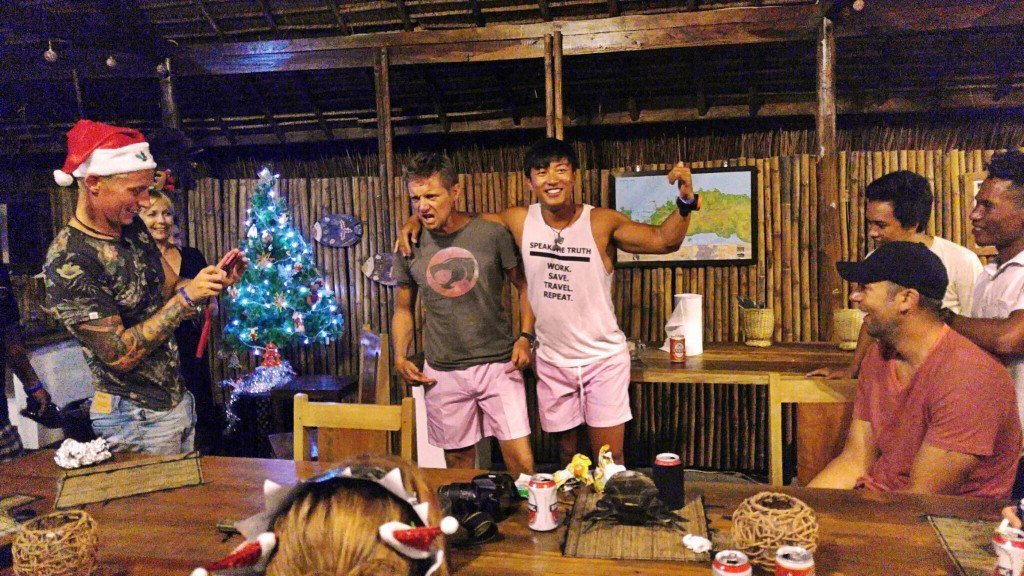
Since Rohan owned the resort, there were a lot of administrative things he had to attend to while I was there and my instructing duties were split between him and Davey, my Aussie brother from another mother. I was his first divemaster student and hopefully, did not give him too hard of a time! Davey turns out did most of my instructing and signed off on most of the requirements. As a token of my appreciation, I gave him my most iconic of pink shorts (as well as Rohan) that turned out to be the envy of the entire resort. Who can blame them?

The Crew in Komodo
I gotta say that having a good group of staff and customers makes the experience go from good to amazing. You’re always scared to have that one customer that thinks he’s better than everyone else and has unrealistic expectations. Thankfully, almost all of the customers that came during my time were awesome.
I think part Scuba Junkie attracts the best in travelers as it’s a resort off the beaten path and people that come here want to chill out and dive. With that said, my experience wouldn’t have been as good without the rest of the staff here. This includes Fandy and Yadi, two local divemasters that had laser vision underwater I swear, Matthias, Jaz, Carys, Ben.
Last but not least, having another divemaster in training made the experience so much more fun as we could revel and laugh in each others sorrows and joys going through the course. Mel, the coolest Aussi chick I’ve ever met, made that happen.
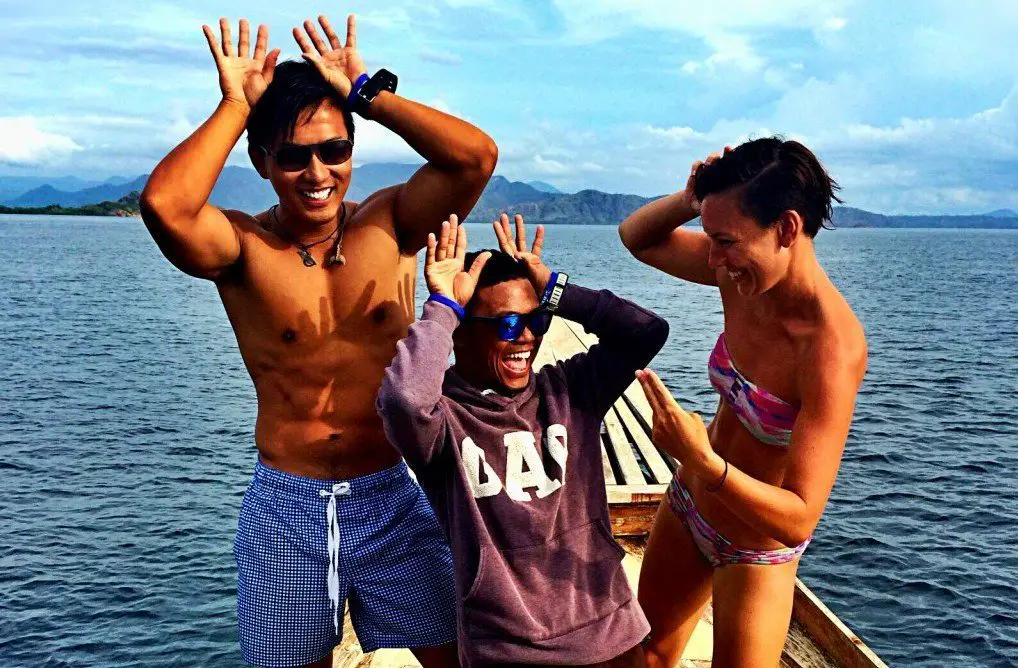
The Customers
The main part of being a divemaster is your interaction with the clients. At the end of the day, diving is still a business to make money and the customers are the ones paying. As a Divemaster trainee, you’re doing everything a real Divemaster does except the guiding of the customers, so this includes full time interaction with them. Thankfully, most of the people here introduced themselves as if they were a new friend instead of a new customer, and I’m sure I will see some of them again in the future.
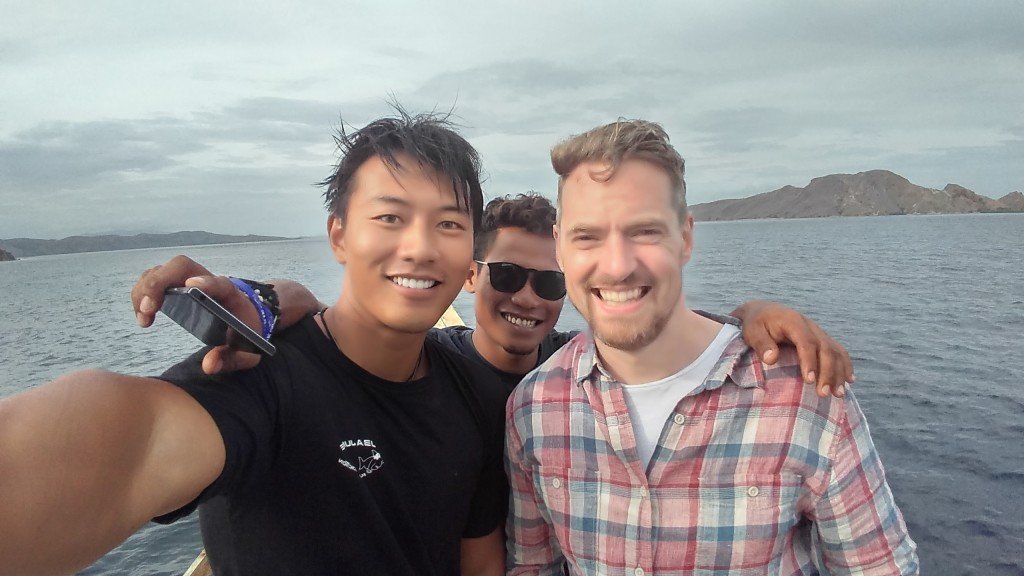
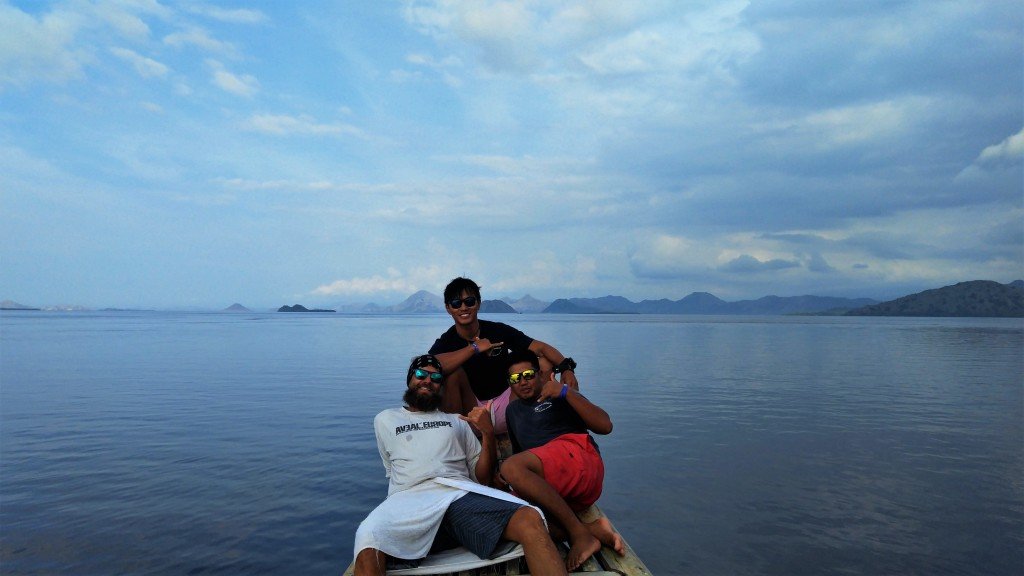
The three parts of the Divemaster
There are essentially three main sections of the PADI DMT course and I will explain them in detail.
Knowledge Development where you strengthen your dive theory knowledge which is the foundation for creative problem solving.
- Read the divemaster manual and complete all the knowledge reviews
- Pass the two part divemaster exam (75% is passing)
- Prepare an emergency assistance plan with information needed to manage a diving accident at any particular dive site.
Waterskills Development exercises prove your fitness for diving and your competency at in-water skills.
- Swimming tests
- Swim 400m nonstop without any swimming aids using any stroke and in the open water (for me at least)
- 800m snorkel and fins swim
- 15 min tread. Stay afloat in the open water for 15 minutes without any assistance
- 100m tired diver tow: Tow a diver at the surface without any assitance with both divers in full scuba gear
- Equipment Exchange: Fully exchange equipment underwater except wetsuit and weight belt. ALso called the “Stress test” that I will talk about later
- Diver Rescue: A review of the important skills from the Rescue course
- Dive Skills workshop: Demonstrate how to perform skills as if they were teaching a student for many skills
Practical Application sessions give candidates hands on experience of dealing with actual diving problems that occur.
- Dive setup and management
- Mapping project
- Dive briefing
- Search and recovery scenario (from rescue course)
- Deep dive scenario
- Assist on two real courses (open water, advanced open water, rescue)
- Teach a scuba refresher course
- Teach a “discover scuba” course
- Guide certified divers
- Act like a professional by interacting with customers and being a dive resource for less experienced divers on board
- Most importantly, diving as much as possible because there’s no substitute for experience in the dive industry.
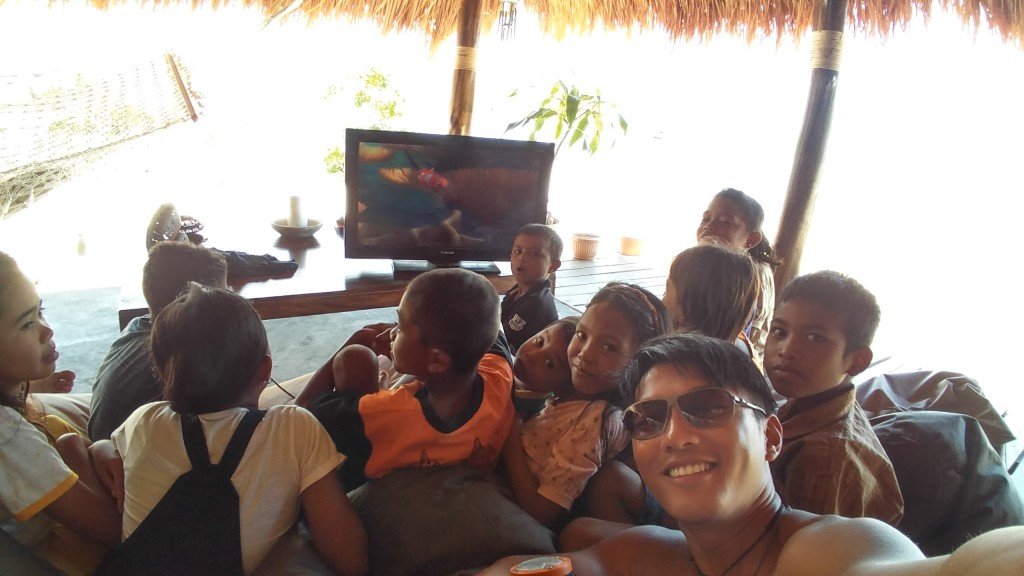
An average day in the life of a DMT
It didn’t take long for me to settle into my surroundings and get into the daily flow of things. Within a day or two, I was pretty acquainted with what I would be doing for the next month. For the most part, my days consisted of the following:
- 05:30: Wake up and get ready
- 06:00 to 06:30 – Load the tanks and customer equipment onto the boat
- 06:30 to 07:00 – Brief the guests on the days activities and load up the boat with breakfast and lunch
- 07:00 – Depart the resort on the boat
- 07:00 to 08:30 – Boat drives to the destination, eat breakfast on the boat
- 09:00 to 10:00 – First dive
- 10:00 to 11:30 – Surface Interval, switch tanks for customers
- 11:30 to 12:30 – Second dive
- 12:30 to 14:30 – Surface interval and lunch, switch tanks for customers, nap if possible
- 14:30 to 15:30 – Third dive
- 15:30 to 16:30 – Head back to the resort, nap on boat
- 16:30 to 17:00 – Clean equipment and unload tanks
- 17:00 to 19:00 – Relax, have some beers, enjoy the sunset, hang out with the guests, read the divemaster textbook, do logbooks with customers
- 19:00 to 20:00 – Dinner
- 20:00 to 21:00 – More beers, read textbook, hang out with guests
- 21:00 to 22:00 – Usually exhausted by this point and straight to bed
- Rinse and repeat

For a month, this was my life and to be honest, I’ve never slept so well because diving three times a day really takes it out of you. Some days, instead of diving with the group, the DMTs and instructors would branch off from the group to do our own thing, usually as a part of the divemaster course.
Demonstrating skills & more diving
One of the most important parts of the DMT is demonstrating proficiency at skills. This part will probably only make sense to people that dive. More or less, the skills that were demonstrated to you during your first dive class by the instructor is now your job as a DMT to replicate. So you need to demonstrate how to do the skills as if you were teaching a new student.
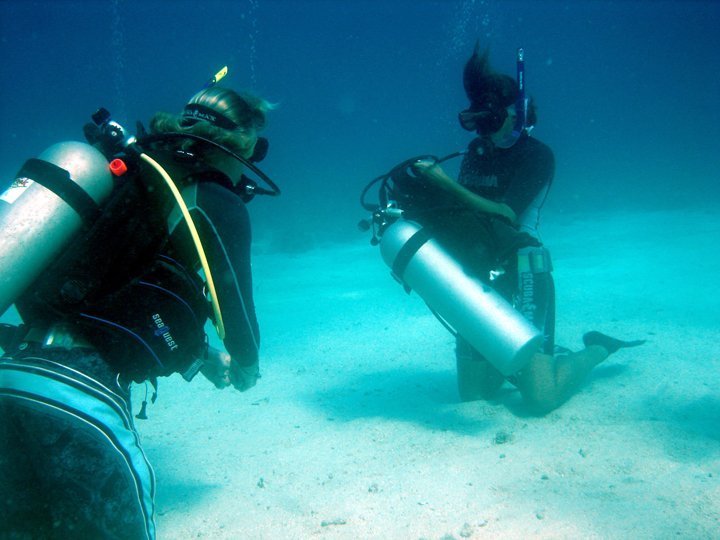
I’d say this is one of the most important parts of the course but is really almost an intro to the next course, the PADI Instructor. As a divemaster, you cannot teach these skills in an official setting to students, nor can a divemaster certify a new diver. The skills that must be performed are reg recovery, mask clearing, five point ascents, buoyancy control, etc. All skills are scored from 1-5 by the instructor with 5 being able to fully demonstrating without it looking at all problematic. Since we had no pool or confined water spaces in Komodo, EVERYTHING in the course is done in the ocean, which only makes it more challenging (but fun) due to its currents.
Practicing the skills
We spent loads of time, and multiple dive sessions practicing and demonstrating the skills over the duration of my course. There was another DMT, an awesome Aussie chick named Mel, that was also doing her course at the same time as me. It would be our instructor Rohan or Davie, Mel, and myself descending to the bottom, kneeling, and practicing the skills over and over again. The instructor would first demonstrate how to demonstrate the skill, and one of us would follow.
Luckily it turns out, I’m a complete natural at following body motions and just completely owned this part of the course. My amazing friend Mel on the other hand…had to take a few more tries! This was probably one of the more entertaining parts of my course was watching Mel struggle to perform the skill, and watching her attempt to do it over and over again. I don’t think the three of us had ever laughed so hard underwater and. It wasn’t until after she left that we realized how boring it’d be. Davey and I would descend just the two of us and I would perform the skills in a robotic (but correct) fashion and we would surface without any incident.
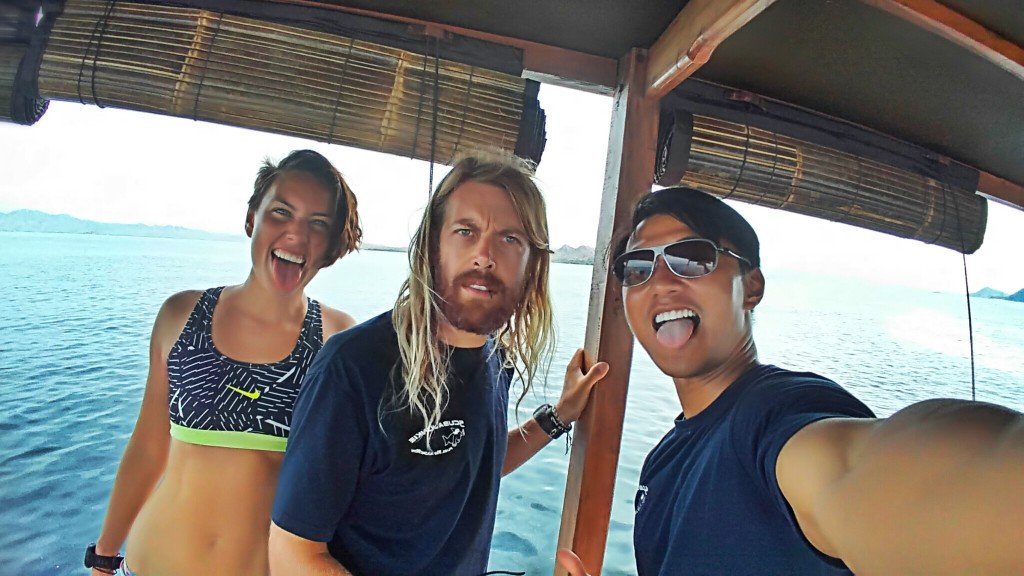
Search and Rescue
As part of the DMT course, we have to perform the search and recovery scenarios, as well as surfacing an unresponsive diver in the water. Divers who have taken the PADI Rescue course will be familiar with this. This is meant to test your skills navigating through the water, one of the most important skills of a DM, as well as tying knots which is imperative to anchor a boat or attach a float to an object. All of this was review for me but anyone that has done the rescue course knows how much fun it is and redoing it as part of the DMT course was no different.

For those unfamiliar with this, essentially someone is at the bottom unresponsive, and your job is to surface them slowly to the surface, perform rescue breaths at the surface, while removing their equipment and towing them towards the boat simultaneously. I especially loved being the “victim” in this scenario as I am extremely negatively buoyant (so I sink like a rock) making it much more challenging to rescue.
I had to pretend like I was unconscious while the “rescuer” was giving me rescue breaths but sometimes I couldn’t help but chuckle as my rescuers had so much trouble keeping me afloat while dragging me through the water.
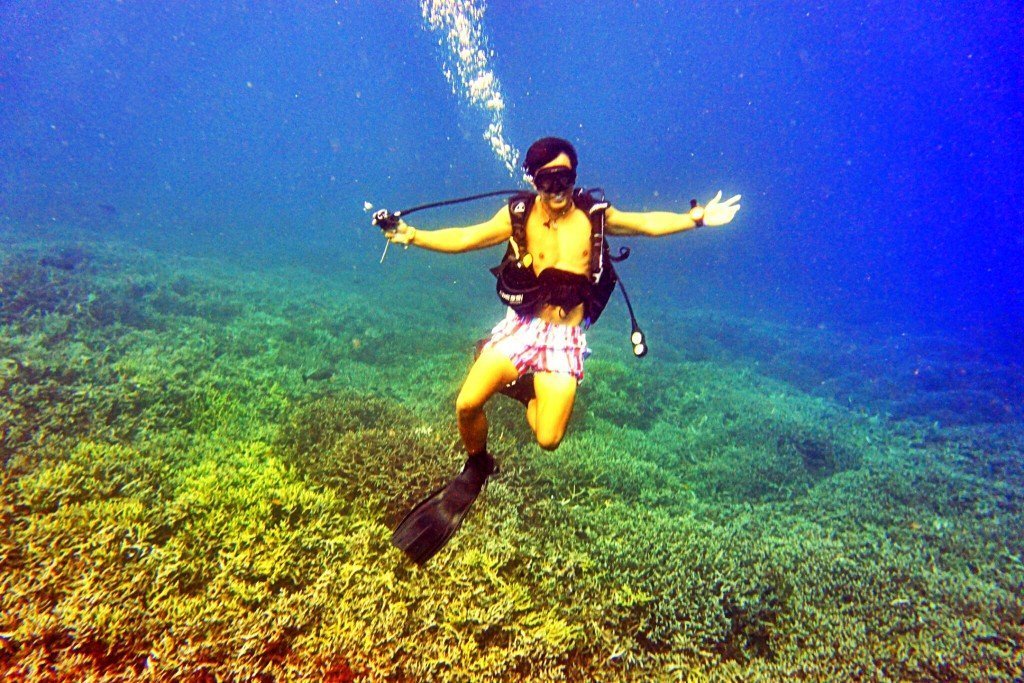
Waterskills
Most diving-averse people have the misconception that they can’t swim, they can’t dive. Well I’m here to say that being a professional swimmer is NOT a requirement. It certainly won’t hurt, but once you put on your fins, you’ll be gliding through the water even if you have feet of stone. However, a divemaster is expected to assist in trouble situations and be a professional so being a competent swimmer IS a requirement. There are five swim tests as part of the course and each skill is scored from 1-5 depending and a cumulative score of 15 is considered passing:
- 15 min float, hands out of the water for the last 2 minutes
- 400m open water swim with no assistance (no fins/masks/snorkel)
- 800m open water swim with fins and mask
- 100m tired diver tow
- Equipment Exchange (will get into that one at the end)
As a person that sinks to the bottom like a rock, the first two skills were by far the hardest. I’ve never been good at treading water due to my negative buoyancy and the day I had to do this was probably the only nervous moment of my course. The trick is to hold your breath as much as possible as this provides positive buoyancy. Even so, I was splashing in the water like a drowning man.
All the customers and other staff watched from the boat laughing and cheering, but mostly laughing, until the last two minutes where I had to take my hands out of the water. Doing this made it 10x harder. At this point, I was so gassed and my head was going in and out of the water that I thought there was no way I was going to make it. By this point, I think everyone on the point stopped laughing and began to ponder if this guy might actually need rescuing.
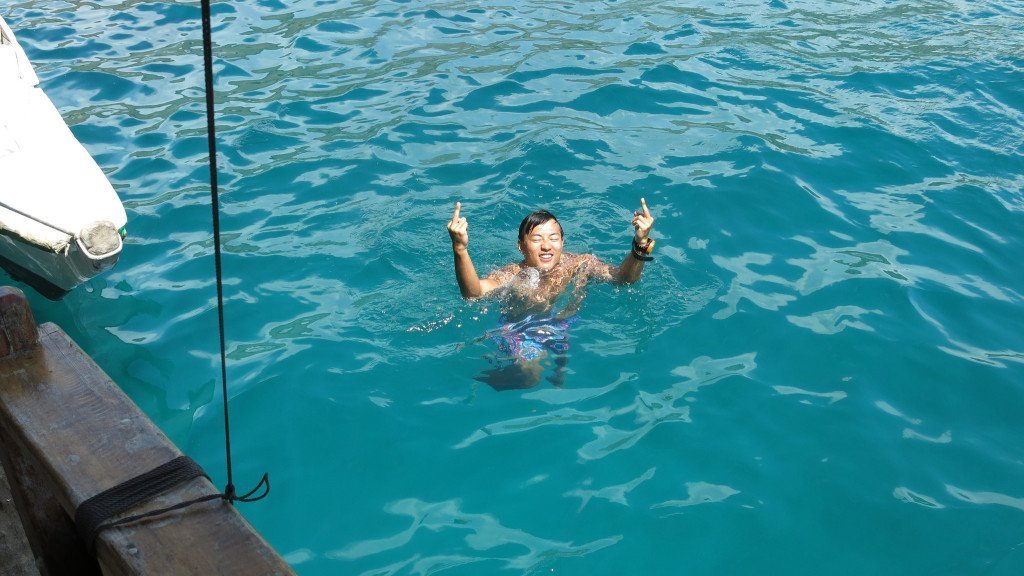
Eventually, I survived and made it through, collapsing as I got onto the boat, and subsequently going on a dive half hour later! This scarred me for a few weeks but eventually, I figured out that this skill is not a 15 min tread but a 15m float. This means, you don’t need to tread water, but can just lay on your back so I almost died for nothing!
I re-did this skill a few weeks later after I was fully recovered emotionally and did it without much threat of drowning, much to the chagrin of the customers on the boat that day who had heard all about my experience was were expecting some entertainment. I scored a 5 on this the second try!
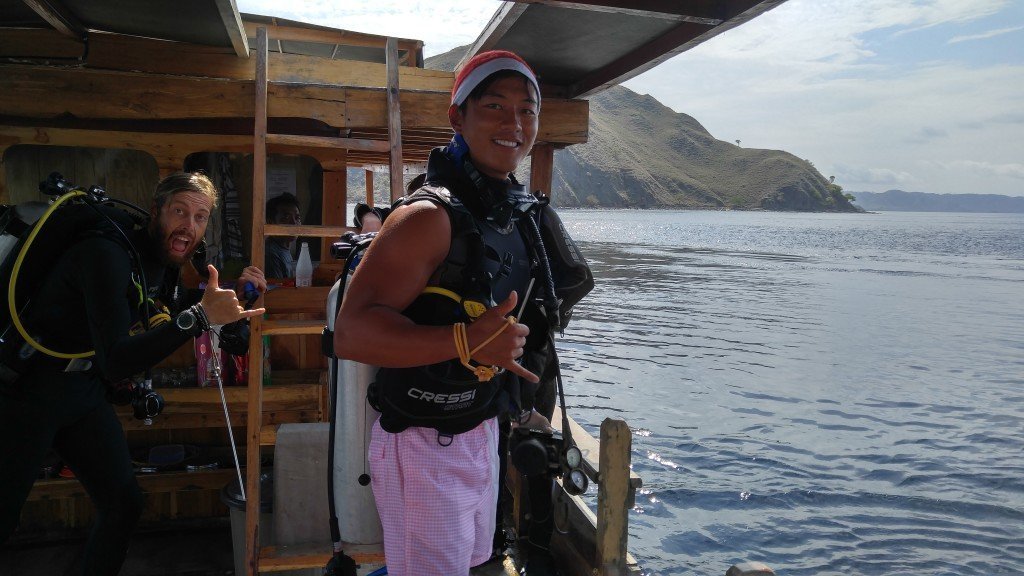
The 400m open water swim was also challenging especially since Komodo has some of the most hectic currents out there. Swimming against any sort of current will quickly tire anyone out and it was no different for me. After a long day of diving (big mistake), I proceeded to swim the 400m in the ocean. Any stroke is allowed as long as you finish within a certain time. I started out doing freestyle but I was so tired from the day’s activity that after 50m, I just said F it and went to backstroke. Another 30m, I said F it to that and stopped using my arms altogether and swam the remaining amount like an ungraceful sea otter. Somehow I was able to score a 3 on this!
The 800m was the easiest for me. Buoyancy is my problem, which leads to me expending more energy than others swimming while trying to stay afloat. With the addition of fins and a mask, I was able to do this skill with no issue and scored a 4.
The 100m tired diver tow is another skill I had no problem with due to both me and the “tired diver” wearing full scuba gear. This is where some muscle helps and I’d consider myself not lacking in that category. Easily scored a 5 on this skill.
Theory and Coursework
Everyone’s favorite part of diving in a tropical location, reading a thick textbook. To be honest though, the DMT book really isn’t that bad. Of all the diving agencies in the world, PADI is probably the easiest and least time consuming. That’s not a bad thing in my opinion. It just means PADI recognizes that diving for most people is a recreational activity, and people don’t have the time or desire to become military grade divers. The divemaster textbook consists of 9 chapters, including basic dive theory review, physics, rescue, safety, and the role of a PADI divemaster. All the reading and review with your instructor culminates in one final exam.
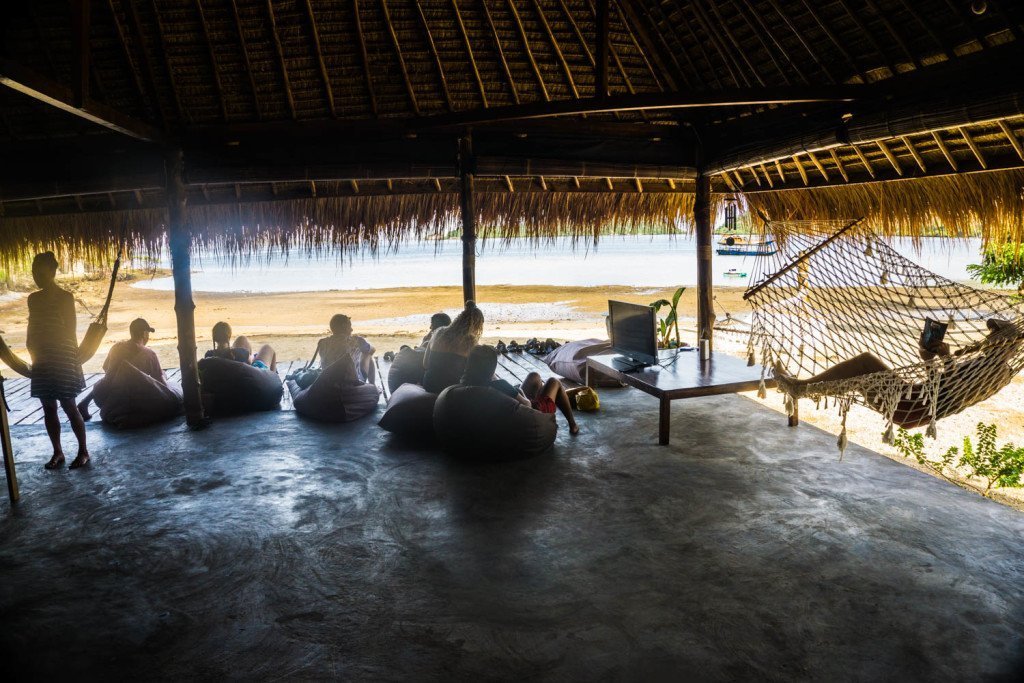
Between all the diving, drinking, and hanging with the customers, it wasn’t easy to find time reading the book and doing the questions. Nevertheless, Scuba Junkie’s resort had an amazing hammock on the beach overlooking the bay and this my spot for the first few weeks. I’d spend a half hour or so my first week reading through the book and doing the knowledge reviews.
The following day, while on a surface interval on the boat, I would review the material with my instructors. After I finished the book, we watched the official PADI divemaster course DVD which pretty much summarized everything I had read. After this was done, Rohan gave me some lectures on the physics and science behind diving which I think are underrated when it comes to things all divers should know.

The final exam followed not so soon after this. I wanted to do it right after all the lecturing but we just never got around to it. I suppose that’s what happens when you’re living in paradise; you just go with the flow! It wasn’t until the last few days that I finally took the test. It’s 120 questions and all mutiple choice.
I hadn’t studied much for it and already forgotten a lot of what was taught to me but I still managed to get 90% on it (75% is passing). I’ve heard of people struggling with the coursework but I think unless English is not a strong suit and if you spend any amount of time reading the material, it’s not a hard test. PADI exams are notorious for being easy and accommodating.
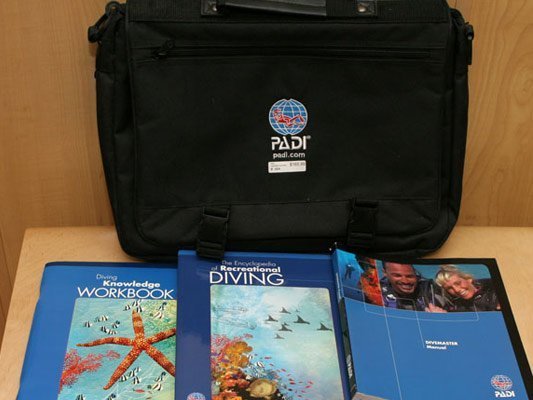
Practical Application and Guiding
The first few weeks of the Divemaster course focuses on learning the basic skills and theory in being a professional diver. Near the latter half of the course, it’s time to put everything you learned into application. Part of the course requires that the DMT (divemaster trainee) assist on actual courses, lead refresher courses, and actually guide dives. A DMT blurs that gray area between being a student at the dive shop and an employee. I did almost everything a DM did like loading the boat every day, servicing the equipment, and everything else except the most important thing, actually guiding customers.

Assisting on courses
During my first week, I assisted on an Advanced Open Water course with two students. While the instructor is the sole individual teaching the principles of the course, my job was to hover in the back and be an experienced diver that can assist if things go wrong.
One of the students, an Italian guy named Massimo, gave me a few opportunities to test out my diving pedigree. Massimo was one of the coolest and funniest dudes I met while doing my DMT but his diving prowess was…lacking shall we say.
I won’t get into specifics but he looked like an undersized boat in stormy waters while swimming and his buoyancy control was almost nonexistent. When a manta would swim up to us, Massimo, like most excited divers would, excitedly took out his camera and losing his buoyancy control in the process. There were numerous times I had to tell him to get down to my level and a few times I grabbed his BCD to make sure he didn’t surface on accident. Nevertheless, Massimo dived at the resort for almost a week, and improved vastly during that week. This is the most important part of being a professional diver and such a good feeling!

I also assisted on an Open water course with one student. Komodo is not a popular place for first dive divers as the currents can make for a very rough introduction to diving. There is no pool at Scuba Junkie’s resort to practice the basics or get comfortable with the equipment. Everything is done in the open water and sometimes that can mean rough conditions. Davey was the lead instructor on the course, followed by Ben, a newly minted instructor that was shadowing the course like me.
Usually, it’s 2-4 students per instructor but this lucky girl had 3 professionals (1 in training) to 1 student! My job was to kneel behind her and make sure she didn’t shoot up to the surface. Again, a divemaster in training, or even a full divemaster cannot teach any part of the open water course to students. It is a requirement of the divemaster course to assist on at least one open water course and I felt like I got a lot out of this.

Guiding
Finally, on to the most important part of the course, guiding. Near the end of the course, after you’ve completed most of your requirements, skills, and mastery of the dive sites, it’s time to put your skills to the test. This was the most challenging part of the course for me as I am terrible with directions and navigation. Even after diving each site a dozen times, I was still second guessing myself. This part really challenged me to stay focused on dives and really think about what I was doing.
The most difficult part of making the leap to a divemaster is knowing that you’re not diving for yourself anymore. While fundiving, someone else is guiding me, making sure I’m doing the important things correctly, and pointing out fish to me. I could be zoned out, or even lose track of the group but the DM would always be looking out for me, checking my air, and making sure I was safe. I could stay focused for 5 minutes, but then be in my own world another afterwards. Doing my divemaster course really taught me to be completely aware of my surroundings and made me constantly think about all the different scenarios that could happen underwater. I’m not diving for myself anymore.
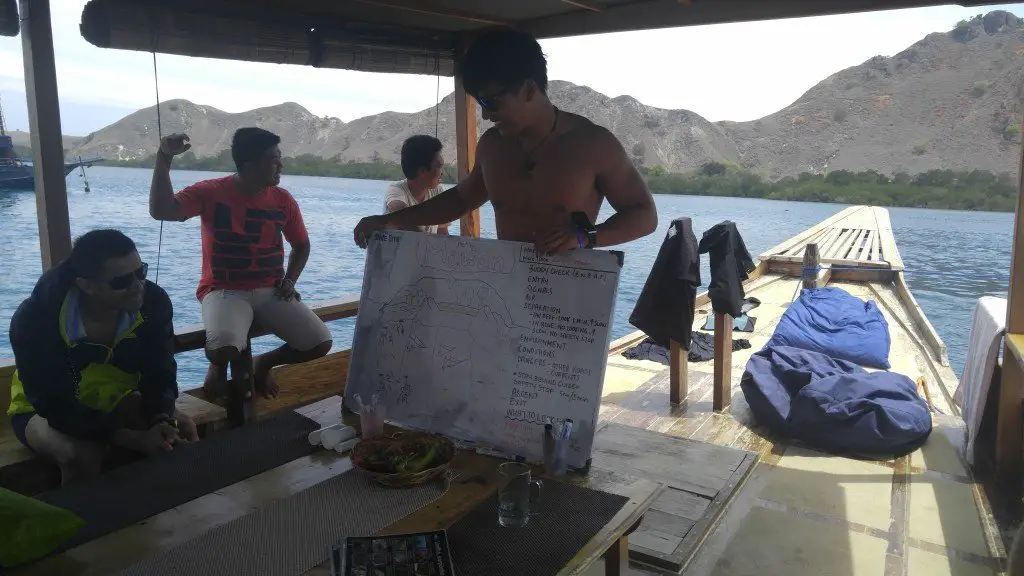
My first few attempts guiding were just with myself and my instructor. We would descend upon my signal, I would give the “ok?” sign, check on his air, point out cool things I’d see and generally pretend like he was a customer. It was a bit strange because here I am, just starting out guiding but I’m taking this guy who’s done it hundreds of times.
We did a few different scenarios where he would assume the role of a freshly minted diver and subsequently give me problems that I’d have to identify and troubleshoot, an very experienced diver with over a thousand dives that thinks he’s too cool for school, a diver with poor buoyancy skills etc.
Eventually, I started guiding some of the customers by myself. This included giving all the dive briefings to the customers and making sure everyone in my group had all their equipment in order. It was crazy how crazy into the zone I got as soon as I descended with the group. I was thinking a million things at once, constantly looking back to the group, asking for air probably too many times, and just overall being an overprotective mother. It’s crazy how many things go through your mind when you’re responsible for people.
Thankfully, most of the divers that visited Scuba Junkie were mostly experienced enough to not have to hand hold. Being a good divemaster with novice divers is not an easy job but I must say diving in the front of the group with nothing but coral in your line of sight is amazing!
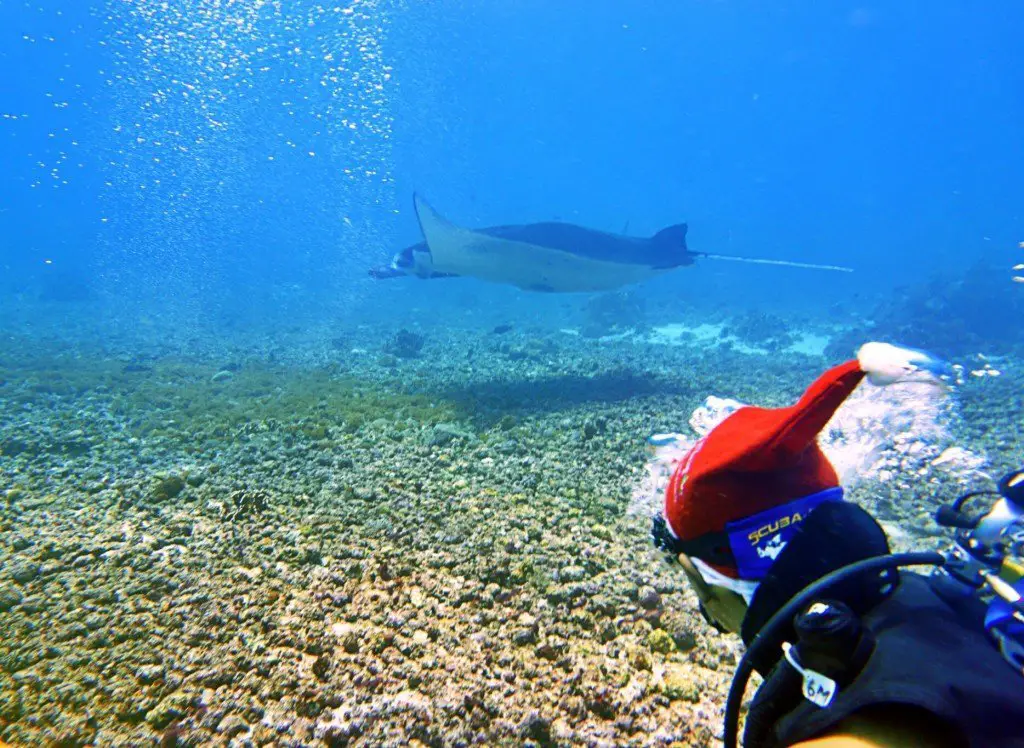
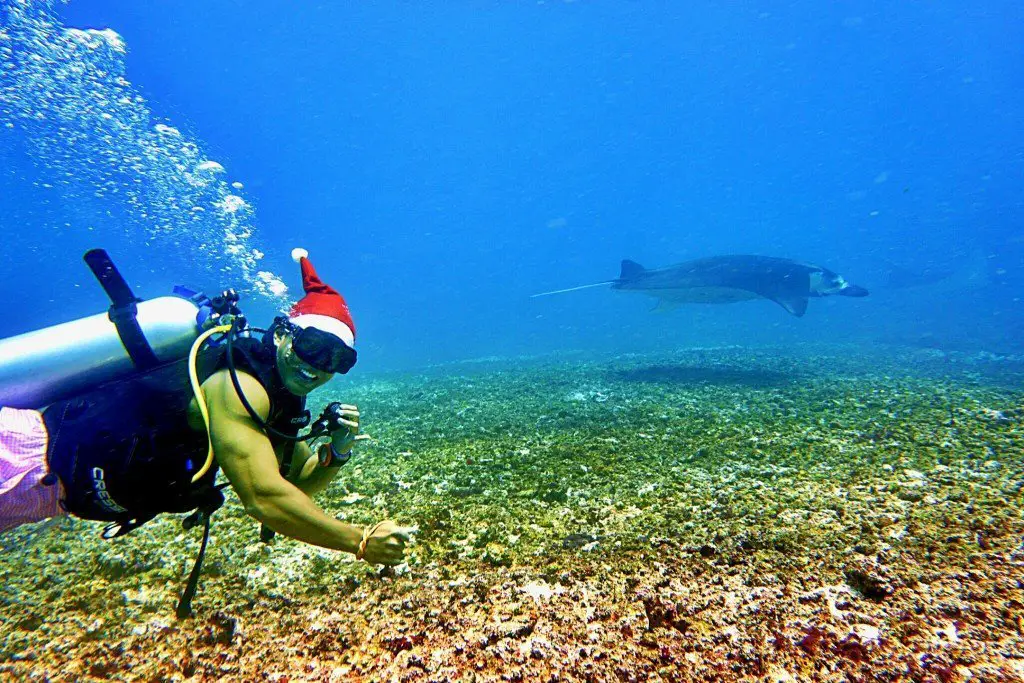

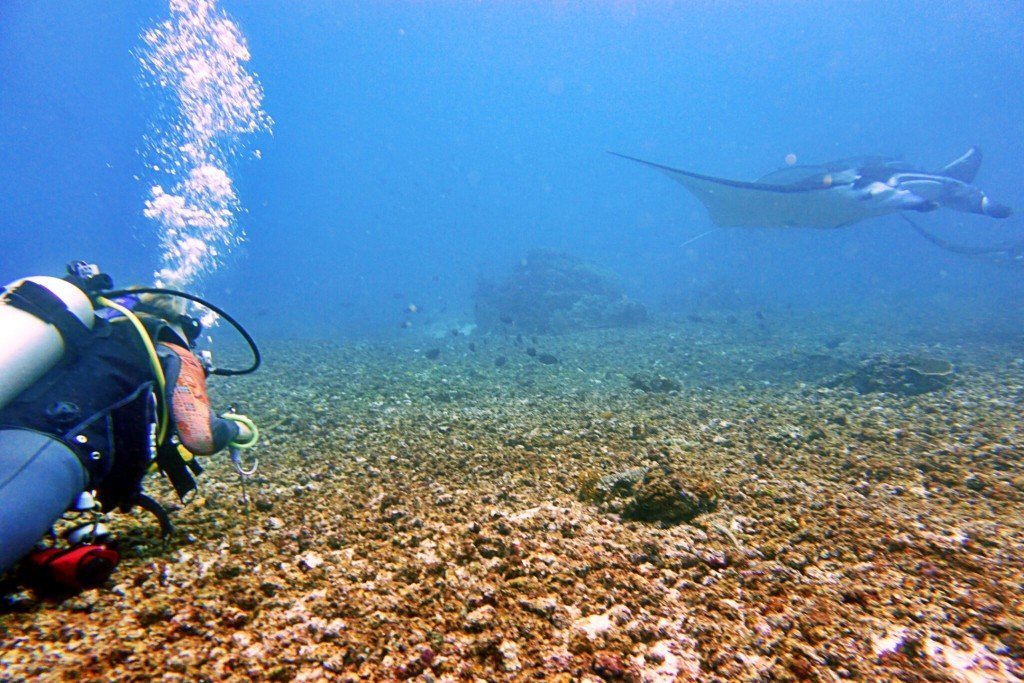

Equipment Exchange and Snorkel Test
Finally, after a months of diving, skills, guiding, teaching, learning, and everything in between, I was almost done with the course. My final two requirements are more hazing than official requirements. It’s a rite of passage if you will for newly minted divemasters. While the equipment exchange, otherwise known as the Stress test, is an official PADI requirement, the snorkel test is certainly not.
Divemaster Equipment Exchange
The stress test is one of the last things to check off the divemaster course. In short, the DMT has to exchange all their dive equipment except wetsuit and weight belt underwater. The purpose of this is so simulate a situation where anything and everything can go wrong and tests how well you react to problematic situations.
Official PADI policies only includes a time requirement for completion but it’s become tradition in the dive industry where your instructor will “interfere” during your equipment exchange. Depending on the instructor, and your rapport with them, this could mean heavy or light interference :).
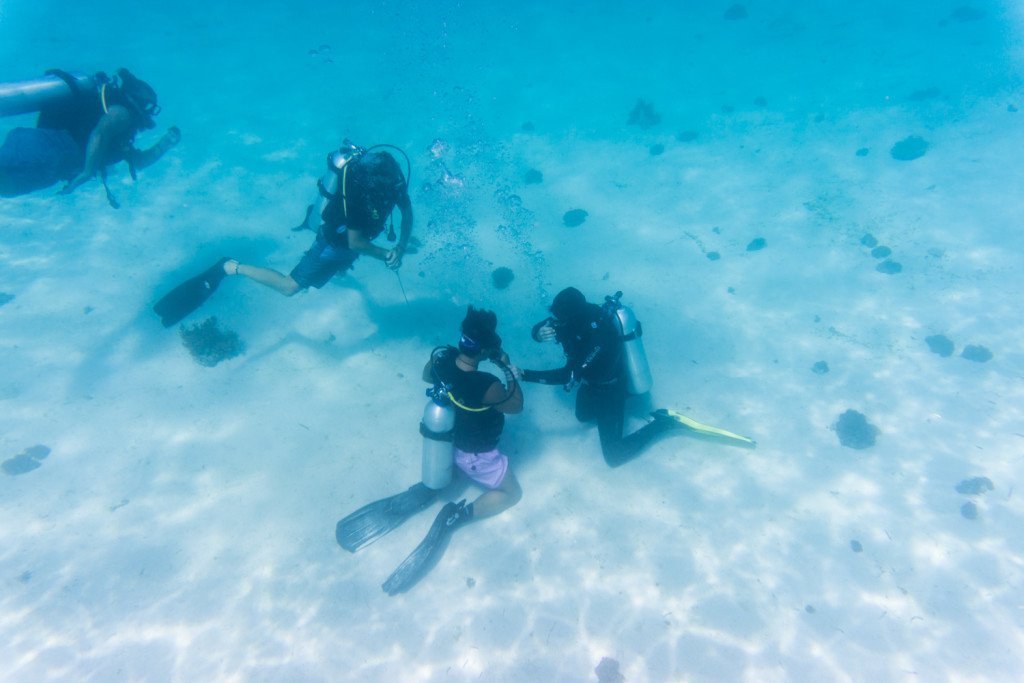
Although I was expecting a pretty involved stress test, Davey went easy on me, probably because I was his first divemaster student. It’s also much more fun when it is two divemaster candidates exchanging their equipment with each other because then the instructor can mess with both divers. I was the only DMT sadly, and I exchanged my equipment with another instructor named Ben so it wasn’t as entertaining.
Examples of “interference” includes inflating my BCD, throwing sand in my face, taking my mask off, ripping my weight belt off etc. all while I’m trying to exchange my mask, fins, and BCD with the other diver. It took me almost 15 minutes to complete the test. The mask and fins were easy but I had troubles with my BCD, especially as I was being pummeled with sand in the face. It was still easily the best “requirement” of the course I had!
Snorkel Test
The snorkel test is nothing like it sounds. For starters, it is NOT part of the PADI curriculum, but it is as integral to a divemaster course as any requirements from PADI are! It’s essentially a chug-a-thon of alcohol through a snorkel and mask. It’s tradition that when you’ve completed your course, you have a big night out to celebrate and the snorkel test/chug is the main event.
If you’re doing a DMT in a beach town, then usually a big party at the bars will ensue. Scuba Junkie is in its own little area though so we kept the party more intimate. Everyone was particularly keen and excited to force alcohol down my throat for some reason.
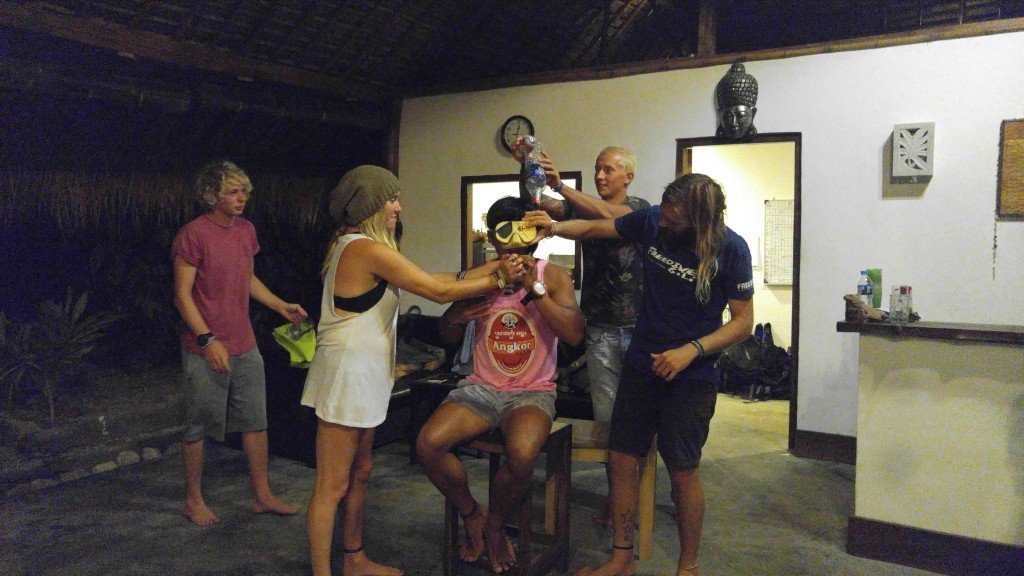
Jaz, one of the DMs at the resort put together this whole dive themed gauntlet of drinking stations. I took shot after shot and beer after beer until I was feeling it heavy. I haven’t shotgunned a beer in years but there just happens to be a dive site in the North of Komodo called the shotgun so . . . you get the idea. The guests at the time, who most had never seen a snorkel test before, got into it too and cheered me on. After drinking the equivalent of 5-6 shots of alcohol, it was time for the main event, the snorkel test.
I hadn’t drank like this since my fratty college days but what the hell, why not? I put on the mask, adjust the snorkel and alcohol is poured in through a funnel. What I’m drinking is supposed to be a mystery but usually the snorkel test consists of anything and everything. Beer, Liquor, hot sauce, soy sauce, vinegar, you name it are all fair game. Safe to say that my concoction was not good and I almost couldn’t do it! After some cheering and motivation, I was finally able to get it all down, and proceeded to immediately throw it up afterwards.

What followed was a night of the usual fun and debauchery including playing American drinking games that many had no seen before, and just more drinking before smoking a cigar and passing out on the beach. I put together a video of my stress test and snorkel test so this should put everything together. Enjoy!
Wrapping it up
The next morning, hungover beyond belief, it was time to say my goodbyes and leave Komodo. I was too hungover and feeling like death to express my sadness in leaving this amazing place that I called home for a month. I’ve never stayed in one place for so long. The people, the setting, the diving, the food, were all just so amazing. Everyday, I’d wake up and just be in an immediate state of happiness and zen. I had become so attached to this place.

Sure, I was doing the EXACT same thing for a month and there were moments where I needed a break, but as soon as I landed in Bali a few hours later, I immediately wanted to go back to Komodo. It really made me just call it quits and start my career in diving because at the end of the day, life is about being happy right?! Sadly, I returned home and went back to a new but familiar job. I’m writing this post two months later, and wishing I could go back to Komodo everyday. To sum it all up, GO TO SCUBA JUNKIE KOMODO FOR DIVING OR TO GET YOUR DIVEMASTER!
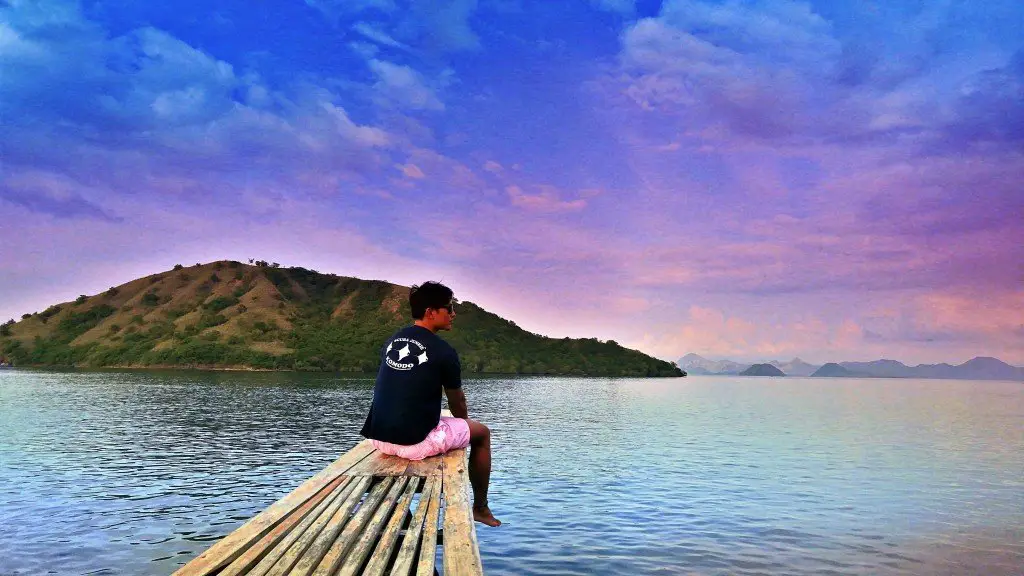



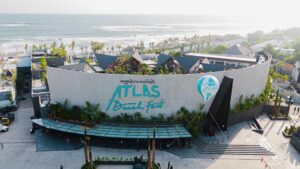
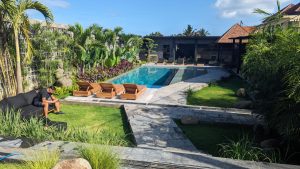
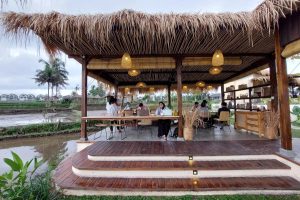
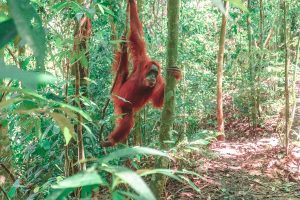
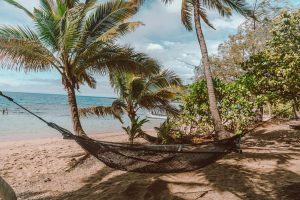
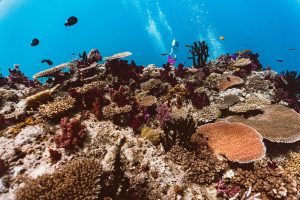
Thanks for sharing the post. This is so interesting. I want to become a good diver.
Hey Johnny,
Great blogs, i can barely keep a diary during my travels.
I am looking to do my DM, I’ve done over 200 dives already and have my rescue diver but haven’t been able to find a spot to do my DM with epic diving.
Would you recommend doing the DM course in Komodo over Sipadan ? I ask because of the park permit it seems you may get access to better reefs in Komodo during a 1 month DM and then it might be better to hit Sipadan as a tourist?
Let me know your thoughts.
Cheers
Curtis
Hey Curtis, you’ve come to th right place to ask that question! First thing’s first, Sipadan is a destination dive. Meaning there are permits involved and long story short, you can only dive Sipadan every few days. You can read that here https://johnnyafrica.com/diving-sipadan-malaysia/
I actually went to Sipadan to dive before I started my divemaster in Komodo. Since you can’t dive Sipadan every day, I spent the rest of my time diving around Mabul and Kapulai (nearby islands). Diving was great especially if you like the small stuff, but obviuosyl Sipadan is in its own league. As a divemaster trainee there, you’ll likely NEVER dive Sipadan as part of your training as those permits go to paying customers only (not to DMTs).
I found Komodo’s diving to be on par and perhaps better than Sipadan and I got to dive it every day! There is also loads of small stuff, manta rays, beautiful corals, walls, did I mention manta rays?? I wouldn’t hesitate for a second to recommend Komodo over Sipadan!
Hey Johnny thanks so much for the info! The Scuba Junkies setup in Komodo looks amazing as well, you seem to be away from everything except the diving! PERFECT!
maybe that is where I will have a look!
I will have to save Sipadan for a visit maybe on the same trip if I am lucky. Thanks so much for the reply
Enjoy your trip man! Very jealous, wish I could be back there!!
Hi Johnny. Thoroughly enjoyed reading your blog and feeling witty and stressed along the way. So after my first email to Carys, she mentioned there is 6 weeks DMT as well which will involve more guiding and real work as a DM kinda scenario and is potentially less stressing than 4 weeks. Would you recommend? You most likely would by the sound of it lol but judging from my level of fitness I’d probably die half way through… Cheers for the sharing 🙂
hi Bin, you’re right, I would absolutely recommend the extra weeks! The only reason I didn’t spend more time was because I couldn’t swing it with work. if you have the time (and money), 6 weeks is an absolute no brainer and you won’t regret it!
Hi Johnny, great blog posts about your experience becoming a DM. Found your blog through a commend on Scubaboard 😉
Just want to say thanks for the great info and a good look at what it takes to become a DM.
Cheers
Thanks Garrett! much appreciated and glad you enjoyed the post!
Hi there, I will start my DMT with Scubajunkie in two weeks. You write you didn’t have any equipment apart from the dive computer. Same for me. However, they want me to bring a SMB, compass, knife and dive slates. I would really prefer not to buy these things in Indonesia, as they are much cheaper in Europe. Carys wrote I would need them for the mapping project though. Was it a problem for you?
Hi Evi, yes I did not show up with nothign but a dive knife. However, as part of the DMT and actually being a professional DM afterwards, you really need those things. I ended up buying a SMB, compass, and tank banger from them at the resort.
You should ask to see if they can sell you the gear because they get good prices on them. As for a dive slate, they are definitely needed for the mapping project but I suspect they should be easy to find anywhere in Indo. I never got a knife however, but this might be a new requirement they have . Enjoy your DM!
Hi there. I will start my DMT with Scubajunkie in two weeks. You write you didn’t have any equipment apart from a dive computer. Same for me. However, they want me to bring a SMB, compass, knife and dive slates. I would really prefer not to buy these things in Indonesia, as they are much cheaper in Europe. Carys wrote I would need them for the mapping project though…
Mate your series of posts is excellent! Really liked the detail you went into for your DMT and it brought back some very good, and painful memories. I did my 400m swim after a decent night out and that might have been the worst experience of my life. Also, your equipment exchange video was also quality entertainment!
Thanks for the message! I was dead tired when I did my 400m swim I couldn’t imagine doing it hungover. Hopefully that’s something I’ll never have to do in real life or else I will be in trouble!
I don’t know what you’re talking about. My skills demonstrations were TOP NOTCH from the word go!!!! hahahaha … almost as good as your floating skills 🙂
I can’t help that I’m so dense and muscly! You, on the other hand with the Reg recovery haha I still laugh when I think about it sometimes!